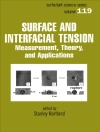Graphene for Post-Moore Silicon Optoelectronics
Provides timely coverage of an important research area that is highly relevant to advanced detection and control technology
Projecting device performance beyond the scaling limits of Moore’s law requires technologies based on novel materials and device architecture. Due to its excellent electronic, thermal, and optical properties, graphene has emerged as a scalable, low-cost material with enormous integration possibilities for numerous optoelectronic applications. Graphene for Post-Moore Silicon Optoelectronics presents an up-to-date overview of the fundamentals, applications, challenges, and opportunities of integrating graphene and other 2D materials with silicon (Si) technologies.
With an emphasis on graphene-silicon (Gr/Si) integrated devices in optoelectronics, this valuable resource also addresses emerging applications such as optoelectronic synaptic devices, optical modulators, and infrared image sensors. The book opens with an introduction to graphene for silicon optoelectronics, followed by chapters describing the growth, transfer, and physics of graphene/silicon junctions. Subsequent chapters each focus on a particular Gr/Si application, including high-performance photodetectors, solar energy harvesting devices, and hybrid waveguide devices. The book concludes by offering perspectives on the future challenges and prospects of Gr/Si optoelectronics, including the emergence of wafer-scale systems and neuromorphic optoelectronics.
- Illustrates the benefits of graphene-based electronics and hybrid device architectures that incorporate existing Si technology
- Covers all essential aspects of Gr/Si devices, including material synthesis, device fabrication, system integration, and related physics
- Summarizes current progress and future challenges of wafer-scale 2D-Si integrated optoelectronic devices
- Explores a wide range of Gr/Si devices, such as synaptic phototransistors, hybrid waveguide modulators, and graphene thermopile image sensors
Graphene for Post-Moore Silicon Optoelectronics is essential reading for materials scientists, electronics engineers, and chemists in both academia and industry working with the next generation of Gr/Si devices.
Inhoudsopgave
CHAPTER 1. INTRODUCTION OF GRAPHENE FOR SILICON OPTOELECTRONICS
1.1 Introduction
1.2 Optical Absorption
1.3 Emergence of Graphene in Silicon Optoelectronics
1.4 Photodetection in Graphene
1.4.1 Performance Metrics
1.4.2 Photovoltaic Effect
1.4.3 Photoemission in Graphene Schottky Junctions
1.4.4 Thermionic Emission in Graphene Based Interfaces
1.4.5 Hot Electron Based Photodetection
1.4.6 Infrared Modulators
1.4.7 Photovoltaic Devices
1.5 Challenges and Perspectives
1.6 References
CHAPTER 2. GROWTH AND TRANSFER OF GRAPHENE
2.1 Introduction
2.2 Crystal Structure and Bonding
2.3 Growth of Graphene
2.4 Growth Dynamics and Choice of Substrate
2.4.1 Growth on Metallic Substrates
2.4.2 Direct Growth on Dielectric Substrates
2.4.3 Direct Growth on Semiconductor Substrates
2.4.4 CMOS Compatible Growth of Thin Films Over Graphene
2.5 Growth at Industrial Scale.
2.6 Growth of Macro Assembled Graphene
2.7 Inkjet Printing of Graphene
2.8 Graphene Transfer Methods
2.9 Graphene/Silicon Contact Fabrication
2.10 Graphene Transfer on Flexible Substrate
2.11 Challenges and Perspectives
2.12 References
CHAPTER 3. PHYSICS OF GRAPHENE/SILICON JUNCTIONS
3.1 Introduction
3.2 Physics of Schottky Junction
3.3 Measurement of Schottky Barrier Height
3.3.1 Capacitance Voltage Measurement
3.3.2 Current Voltage Measurement
3.3.3 Photoelectric Measurement
3.3.4 Thermionic Emission Measurements.
3.4 2D Materials and Schottky Junctions
3.5 Graphene and Conventional Semiconductor Junctions.
3.6 Challenges and Perspectives
3.7 References
CHAPTER 4. GRAPHENE/SILICON JUNCTION FOR HIGH PERFORMANCE PHOTODETECTORS
4.1 Introduction
4.2 Ultraviolet Photodetectors
4.3 Visible to Near Infrared Photodetectors.
4.4 Broadband Photodetectors
4.4.1 Nanostructured Materials for Photodetection
4.4.2 Applications of Nanomaterials for Graphene Silicon Integrated Photodetectors
4.5 Challenges and Perspectives
4.6 References
CHAPTER 5. GRAPHENE/SILICON SOLAR ENERGY HARVESTING DEVICES
5.1 Introduction
5.2 Emergence of Graphene Silicon in Photovoltaics
5.3 Photovoltaic Mechanism in Graphene Silicon Solar Cells
5.4 Performance Parameters for Solar Cells
5.5 Theoretical Efficiency Limits of Graphene Silicon Solar Cells
5.6 Optimization of Graphene/Silicon Solar Cells
5.6.1 Doping of Graphene
5.6.2 Light Trapping in Silicon
5.6.3 Antireflection Coating
5.6.4 Interface Engineering
5.6.5 Surface Passivation
5.7 Challenges and Perspectives
5.8 References
CHAPTER 6. GRAPHENE SILICON INTEGRATED WAVEGUIDE DEVICES
6.1 Introduction
6.2 Hybrid Waveguide Photodetector
6.3 Hybrid Waveguide Modulator
6.3.1 Electro Optical Modulator.
6.3.2 Thermo Optic Modulator
6.4 Challenges and Perspectives
6.5 References
CHAPTER 7. GRAPHENE FOR SILICON IMAGE SENSOR
7.1 Introduction
7.2 Quantum Dot based Infrared Graphene Image Sensor
7.3 Graphene Thermopile Image Sensor
7.4 Graphene THz Image Sensor
7.5 Curved Image Sensor Array
7.6 Neural Network Image Sensors
7.7 Graphene Charge Coupled Device Image Sensor
7.8 Graphene Based Position Sensitive Detector
7.9 Challenges and Perspectives
7.10 References
CHAPTER 8. SYSTEM INTEGRATION WITH GRAPHENE FOR SILICON OPTOELECTRONICS
8.1 Introduction
8.2 Graphene Silicon Flip Chips
8.3 Graphene Silicon Heterogeneous Integration
8.4 Graphene Silicon Monolithic Integration for Optoelectronics Applications
8.5 Challenges and Perspectives
8.6 References
CHAPTER 9. GRAPHENE FOR SILICON OPTOELECTRONIC SYNAPTIC DEVICES
9.1. Introduction
9.2. Silicon Neurons
9.3. Synaptic devices
9.4. Silicon Optoelectronic Synaptic Devices
9.5. ORAM Synaptic Devices
9.6. Graphene for Silicon Synaptic Devices
9.7. Synaptic Phototransistor
9.8. Mechano-photonic Synaptic Transistor
9.9. Challenges and Perspectives
CHAPTER 10 FUTURE TRENDS AND CHALLENGES
Reference
Over de auteur
Yang Xu is a full professor and Assistant Dean at the School of Micro-Nano Electronics, Zhejiang University, China. He is an IEEE NTC Distinguished Lecturer and Senior Member of the IEEE Electron Devices Society. His current research interests include emerging low-dimensional smart sensors, photodetectors, and actuators for internet-of-things and flexible electronics.
Khurram Shehzad served as a Research Associate Professor at the School of Micro-Nano Electronics, Zhejiang University, China.
Srikrishna Chanakya Bodepudi is a Distinguished Research Fellow at the School of Micro-Nano Electronics, Zhejiang University, China.
Ali Imran is perusing his research at School of Micro-Nano Electronics, Zhejiang University, China.
Bin Yu is a full professor at the School of Micro-Nano Electronics, Zhejiang University, China. His current research interests include nanoelectronics, sensors, and neuromorphic devices.












